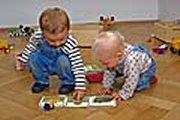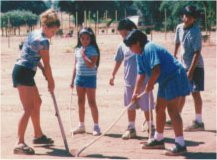Kohlberg's stages or moral development are the most widely accepted of the theories. But not without debate. Kohlberg envisioned six stages of development, with stage four also possibly having stage 4.5.
Click on image to view features of a stage:
Click to view Stage 1 |

Click to view Stage 2 |

Click to view Stage 3 |

Click to view Stage 4 |

Click to view Stage 4.5 |

Click to view Stage 5 |

Click to view Stage 6 |
Please refer to the information below to help you interpret how a person
might move from one stage to the next:
Features of Moral Transition
1. TRANSITION: One must progress through the stages in order, and one cannot get to a higher stage without passing through the stage immediately preceding it. A belief that such a leap into moral maturity is possible is in sharp contrast to the facts of developmental research. Moral development is growth, and like all growth, takes place according to a pre-determined sequence. To expect someone to grow into high moral maturity overnight would be like expecting someone to walk before he crawls.
2. SUBJECTS CANNOT COMPREHEND MORAL REASONING AT A STAGE MORE THAN ONE STAGE BEYOND THEIR OWN. Johnny understands the concept of good in which the "good" may bring him tangible pleasure. The moral maxim "It is better to give than to receive" reflects a high level of development. The child who honestly asks you why it is better to give than to receive, does so because he does not and cannot understand such thinking. To him, "better" means better for him. And how can it be better for him to give, than to get?
3. INDIVIDUALS CAN REASON ONE LEVEL ABOVE THEIR OWN PRESENT [PREDOMINANT] LEVEL. The person has questions and problems the solutions for which are less satisfying at his present level. Since reasoning at one stage higher is intelligible and since it makes more sense and resolves more difficulties, it is more attractive. For example, two brothers both want the last piece of pie. The bigger, stronger brother will probably get it. The little brother suggests they share it. He is thinking at level two, rather than at level one. The solution for him is more attractive: getting some rather than none. An adult who functions at level one consistently will end up in prison or dead.
4. MOVEMENT THROUGH THE STAGES IS EFFECTED WHEN COGNITIVE [mental] DISEQUILIBRIUM IS CREATED, THAT IS, WHEN A PERSON'S COGNITIVE OUTLOOK IS NOT ADEQUATE TO COPE WITH A GIVEN MORAL DILEMMA. The person who is growing, will look for more and more adequate ways of solving problems. If he has no problems, no dilemmas, he is not likely to look for solutions. He will not grow morally. In the apple pie example, the big brother, who can just take the pie and get away with it, is less likely to look for a better solution than the younger brother who will get none and probably a beating in the struggle.
5. IT IS QUITE POSSIBLE FOR A HUMAN BEING TO BE PHYSICALLY MATURE AND OF ADULT AGE BUT NOT MORALLY MATURE. If a child is spoiled, never having to accommodate for others needs, if he is raised in an environment where level two thinking by others gets the job done, he may never generate enough questions to propel him to a higher level of moral reasoning.
It is very common for adults [ parents ] to stop maturing morally at a stage [e.g. stage 3 or 4 ] while becoming mature emotionally, socially and physically. Just because one is of adult age does not mean that they are morally mature!
Quick Overview:
The first level of moral thinking is that generally found at the elementary school level. In the first stage of this level, people behave according to socially acceptable norms because they are told to do so by some authority figure (e.g., parent or teacher). This obedience is compelled by the threat or application of punishment. The second stage of this level is characterized by a view that right behavior means acting in one's own best interests.
The second level of moral thinking is that generally found in society, hence the name "conventional." The first stage of this level (stage 3) is characterized by an attitude which seeks to do what will gain the approval of others. The second stage is one oriented to abiding by the law and responding to the obligations of duty.
The third level of moral thinking is one that Kohlberg felt is not reached by the majority of adults. Its first stage (stage 5) is an understanding of social mutuality and a genuine interest in the welfare of others. The last stage (stage 6) is based on respect for universal principle and the demands of individual conscience. While Kohlberg always believed in the existence of Stage 6 and had some nominees for it, he could never get enough subjects to define it, much less observe their longitudinal movement to it.
Kohlberg believed that individuals could only progress through these stages one stage at a time. That is, they could not "jump" stages. They could not, for example, move from an orientation of selfishness to the law and order stage without passing through the good boy/girl stage. They could only come to a comprehension of a moral rationale one stage above their own. Thus, according to Kohlberg, it was important to present them with moral dilemmas for discussion which would help them to see the reasonableness of a "higher stage" morality and encourage their development in that direction. The last comment refers to Kohlberg's moral discussion approach. He saw this as one of the ways in which moral development can be promoted through formal education.
Note that Kohlberg believed, as did Piaget, that most moral development occurs through social interaction. One good example of social interaction that is helpful in fostering moral reasoning is discussion. The discussion approach is based on the insight that individuals develop as a result of cognitive conflicts at their current stage. Discussion helps a person to interact with other ideas and concepts above his current level; that is, viewing reasoning at the next higher level.
Your feedback on this article is most appreciated. Thank you: E-mail author
References:
1. Sorochan, Walter and Bender, Steve, TEACHING SECONDARY HEALTH SCIENCE, "Chapter 5: Development of Values," John Wiley & Sons, Inc., New York, 1978.
2. All articles and references on this web-site